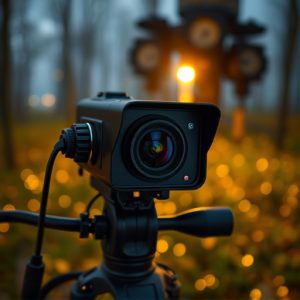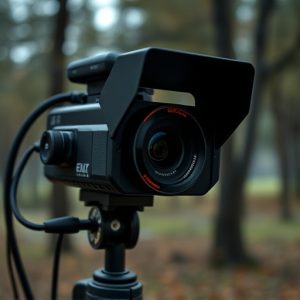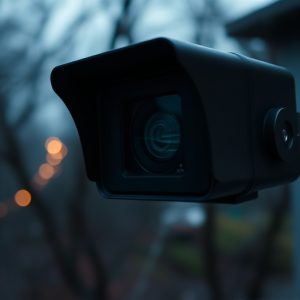Spy Camera Detection: Unveiling Hidden Risks with Light Reflection
Spy camera detection using light reflection techniques has emerged as a crucial tool for enhancing p…….
Spy camera detection using light reflection techniques has emerged as a crucial tool for enhancing privacy and security, especially with the proliferation of tiny cameras for home monitoring. This method leverages natural light to uncover hidden surveillance devices by scattering light off reflective surfaces within a camera's field of view. The resulting patterns can indicate artificial reflections from spy camera lenses due to their low-quality materials and simple designs. Although requiring human interpretation, this non-intrusive approach offers an effective way to check for hidden surveillance equipment in personal spaces. By understanding how light interacts with materials, individuals can locate and disable tiny cameras, ensuring better privacy and security for homes and businesses.
Uncover the innovative world of spy camera detection with our in-depth exploration of the light reflection technique. Learn how subtle changes in light patterns can expose hidden cameras, offering a powerful tool for enhancing home security. We delve into the science behind this method, its advantages and potential hurdles, and real-world applications, including the use of tiny cameras for home monitoring. Discover the future of spy camera detection and stay ahead of surveillance threats.
- Understanding Spy Camera Detection: The Light Reflection Technique
- How Does Light Reflection Help in Identifying Hidden Cameras?
- Benefits and Challenges of This Detection Method for Home Monitoring
- Practical Applications and Future Prospects of Spy Camera Light Reflection Technology
Understanding Spy Camera Detection: The Light Reflection Technique
Spy camera detection has become a crucial aspect of privacy and security, especially with the proliferation of tiny cameras for home monitoring. The light reflection technique is one innovative approach that leverages natural light to uncover covert surveillance devices. By directing a strong beam of light towards potential hiding spots, such as corners or crevices, any reflective surface within the camera’s field of view will scatter the light in a distinctive pattern. This scattered light can then be analyzed for signs of artificial reflection, indicating the presence of a hidden camera lens.
This method takes advantage of the fact that spy cameras often use cheap materials and simple lenses, which do not always effectively manage reflected light. The technique requires a keen eye to interpret the resulting reflections accurately but offers a non-intrusive way to check for hidden surveillance equipment in your personal spaces.
How Does Light Reflection Help in Identifying Hidden Cameras?
Light reflection plays a pivotal role in detecting hidden cameras, especially tiny cameras used for home monitoring. When light encounters an object, it bounces off at different angles depending on its surface properties. In the case of spy cameras, which often have reflective surfaces or lenses, this natural phenomenon can be exploited. By shining a specialized light source onto suspected areas, any camera present will reflect light back in a detectable manner. This reflection pattern can be analyzed to identify the presence and location of hidden surveillance equipment.
The technique takes advantage of the fact that even tiny cameras have physical characteristics that cause light to bounce off in specific ways. This subtle reflection can be easily overlooked by the human eye but is readily detected by specialized equipment or trained professionals. By understanding how light interacts with different materials, individuals can uncover covert recording devices, ensuring better privacy and security for homes and businesses alike.
Benefits and Challenges of This Detection Method for Home Monitoring
The spy camera detection light reflection technique offers several advantages for home monitoring. One of its key benefits is non-invasiveness; it does not require any physical tampering with devices or installation of new equipment, making it an attractive option for homeowners concerned about privacy. This method leverages natural light sources and the properties of reflections to identify hidden cameras, which can be particularly useful in scenarios where tiny cameras for home monitoring are suspected but difficult to locate. By analyzing patterns in light reflections, this technique can reveal the presence of covert recording devices, providing a cost-effective and efficient solution for enhancing security without extensive renovations.
However, challenges exist when employing this detection method. Ambient lighting conditions play a significant role, as inconsistent or low light levels might obscure reflection patterns. Additionally, the technique may not be effective in completely eliminating false positives, as non-camera sources of light or reflective surfaces could yield similar results. Nonetheless, advancements in technology and algorithms are continually improving accuracy, making this approach more feasible for home monitoring applications where tiny cameras are involved.
Practical Applications and Future Prospects of Spy Camera Light Reflection Technology
The practical applications of spy camera light reflection technology are vast, particularly in the realm of home monitoring and security. By employing techniques to detect tiny cameras hidden within environments, this method empowers individuals to safeguard their privacy and ensure the integrity of their spaces. It is especially valuable for homeowners seeking discreet surveillance solutions, allowing them to identify and neutralize potential threats without compromising aesthetics or comfort.
Looking ahead, the future prospects of spy camera light reflection technology appear promising. Advancements in optical sensors and data processing algorithms could lead to more sophisticated systems capable of real-time analysis and accurate identification of hidden cameras. This evolution may contribute significantly to various fields, such as law enforcement, where it can assist in investigative efforts, and in the development of more robust cybersecurity measures across different sectors.
The light reflection technique offers a promising approach to detecting tiny cameras for home monitoring, providing an innovative solution for privacy protection. By utilizing specific lighting conditions and analyzing the reflected patterns, this method allows users to uncover hidden surveillance devices with remarkable accuracy. While challenges remain, such as adapting to varying environmental factors and improving detection algorithms, the benefits are significant. This technology empowers individuals to safeguard their personal spaces, fostering a sense of security in an era where privacy concerns are ever-present. As research progresses, we can expect enhanced spy camera detection tools, ensuring a step towards a more transparent and secure digital environment.


